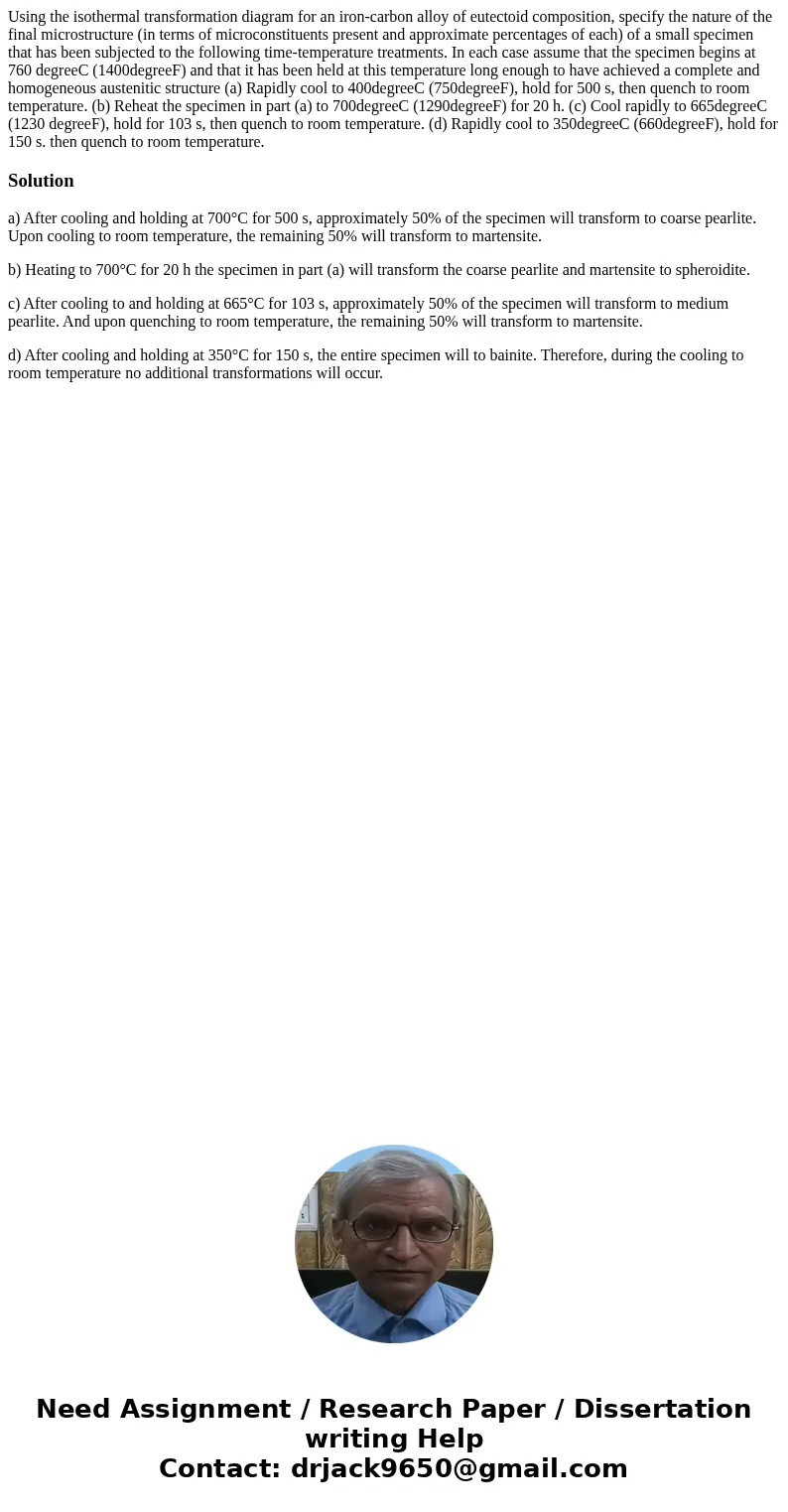Using the isothermal transformation diagram for an ironcarbo
Using the isothermal transformation diagram for an iron-carbon alloy of eutectoid composition, specify the nature of the final microstructure (in terms of microconstituents present and approximate percentages of each) of a small specimen that has been subjected to the following time-temperature treatments. In each case assume that the specimen begins at 760 degreeC (1400degreeF) and that it has been held at this temperature long enough to have achieved a complete and homogeneous austenitic structure (a) Rapidly cool to 400degreeC (750degreeF), hold for 500 s, then quench to room temperature. (b) Reheat the specimen in part (a) to 700degreeC (1290degreeF) for 20 h. (c) Cool rapidly to 665degreeC (1230 degreeF), hold for 103 s, then quench to room temperature. (d) Rapidly cool to 350degreeC (660degreeF), hold for 150 s. then quench to room temperature.
Solution
a) After cooling and holding at 700°C for 500 s, approximately 50% of the specimen will transform to coarse pearlite. Upon cooling to room temperature, the remaining 50% will transform to martensite.
b) Heating to 700°C for 20 h the specimen in part (a) will transform the coarse pearlite and martensite to spheroidite.
c) After cooling to and holding at 665°C for 103 s, approximately 50% of the specimen will transform to medium pearlite. And upon quenching to room temperature, the remaining 50% will transform to martensite.
d) After cooling and holding at 350°C for 150 s, the entire specimen will to bainite. Therefore, during the cooling to room temperature no additional transformations will occur.

 Homework Sourse
Homework Sourse